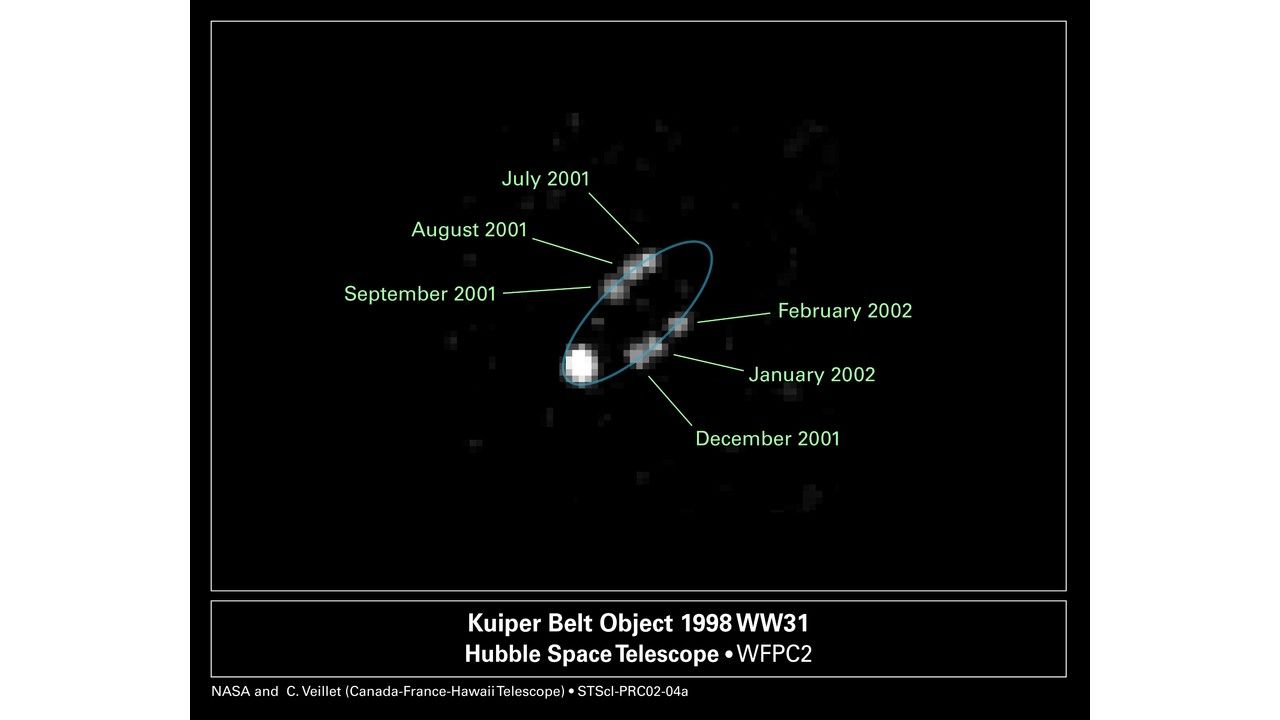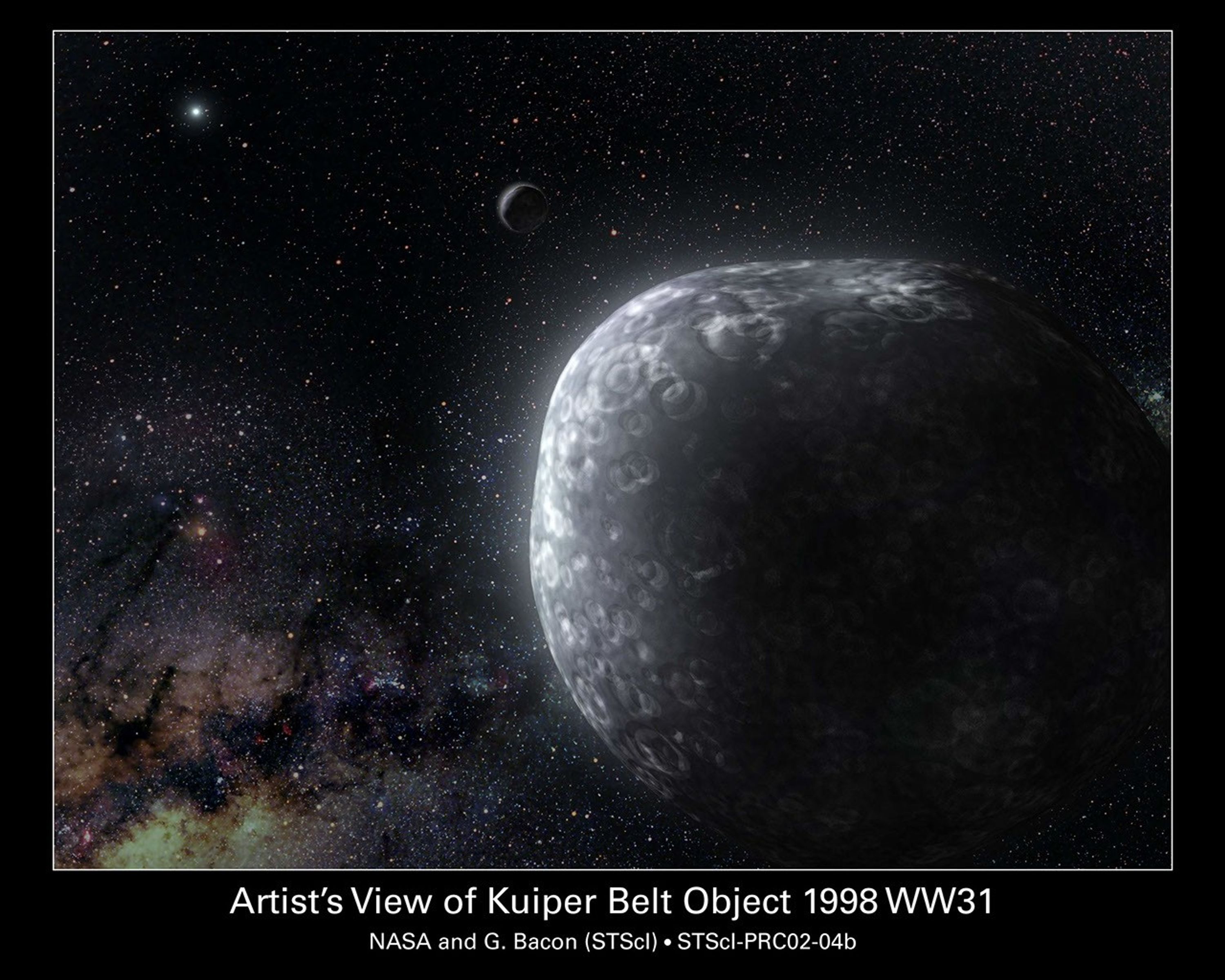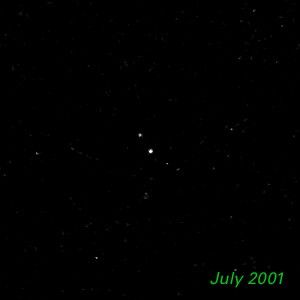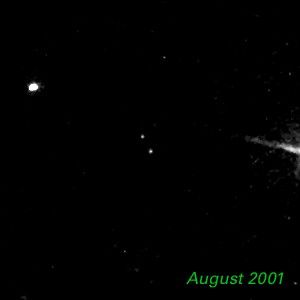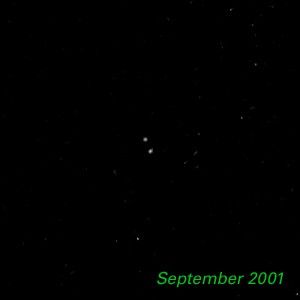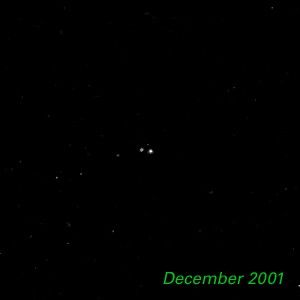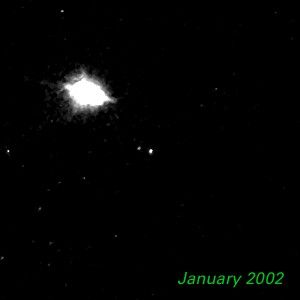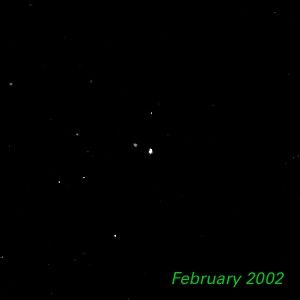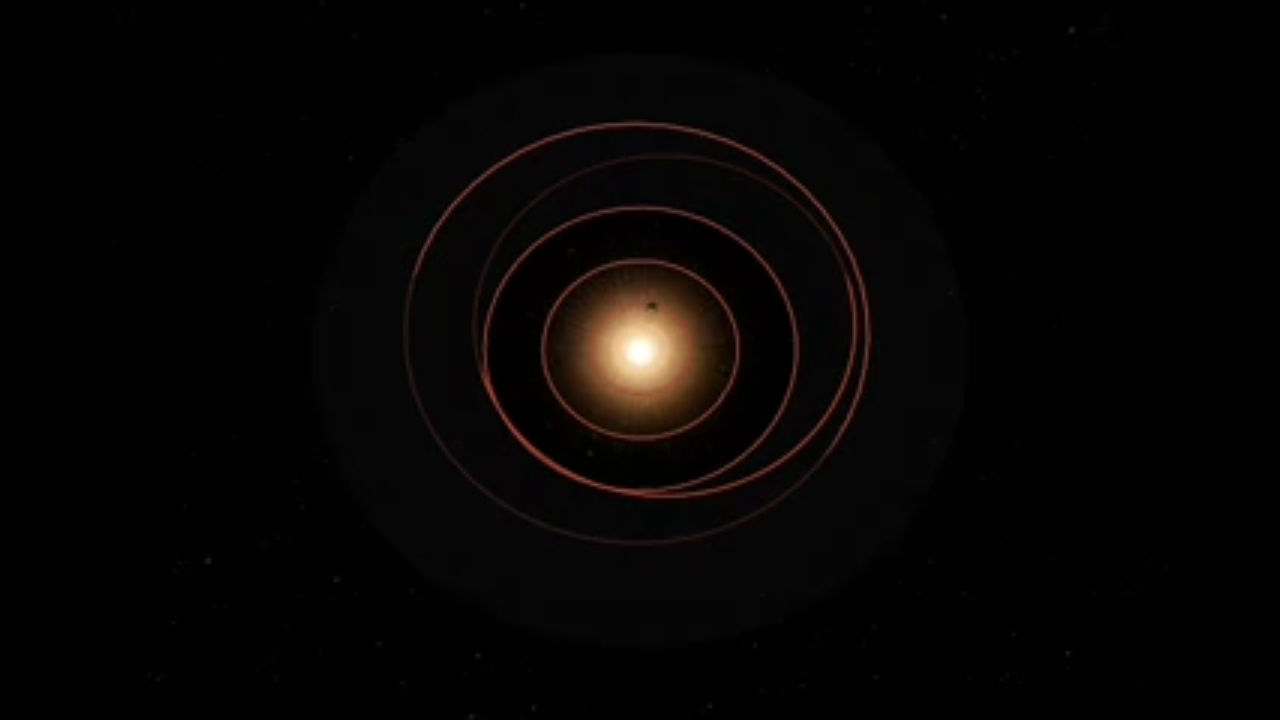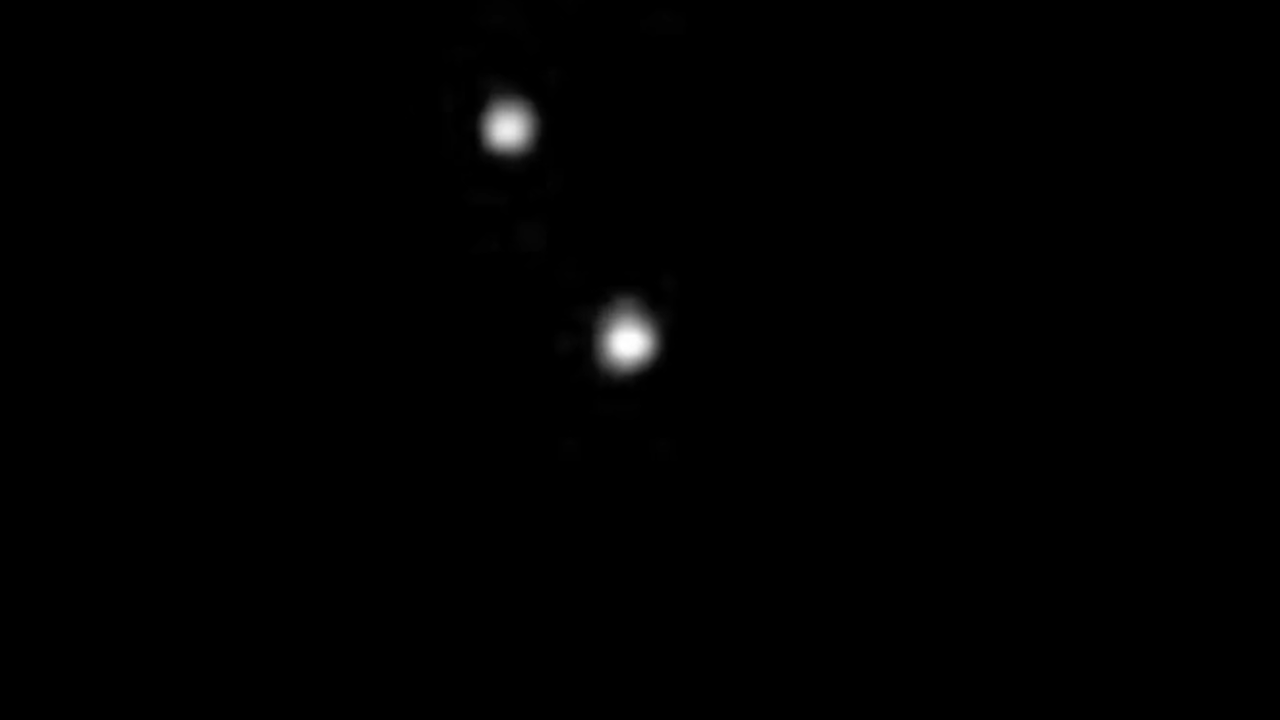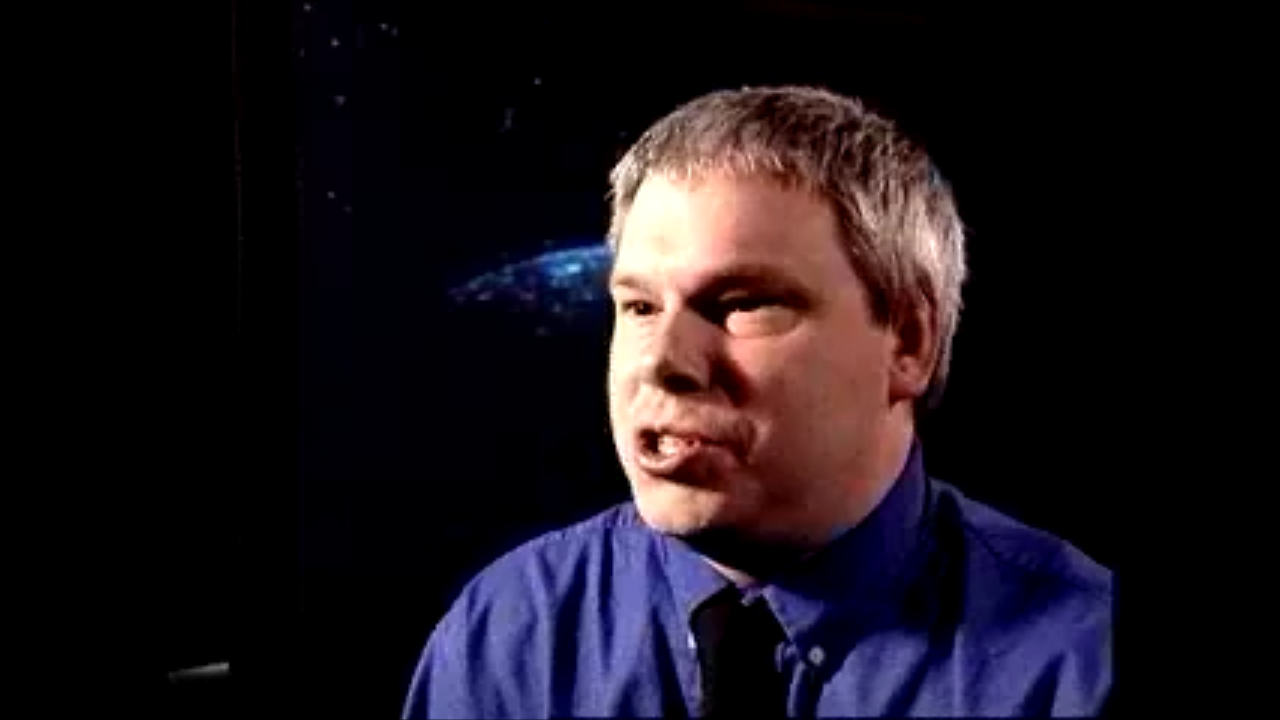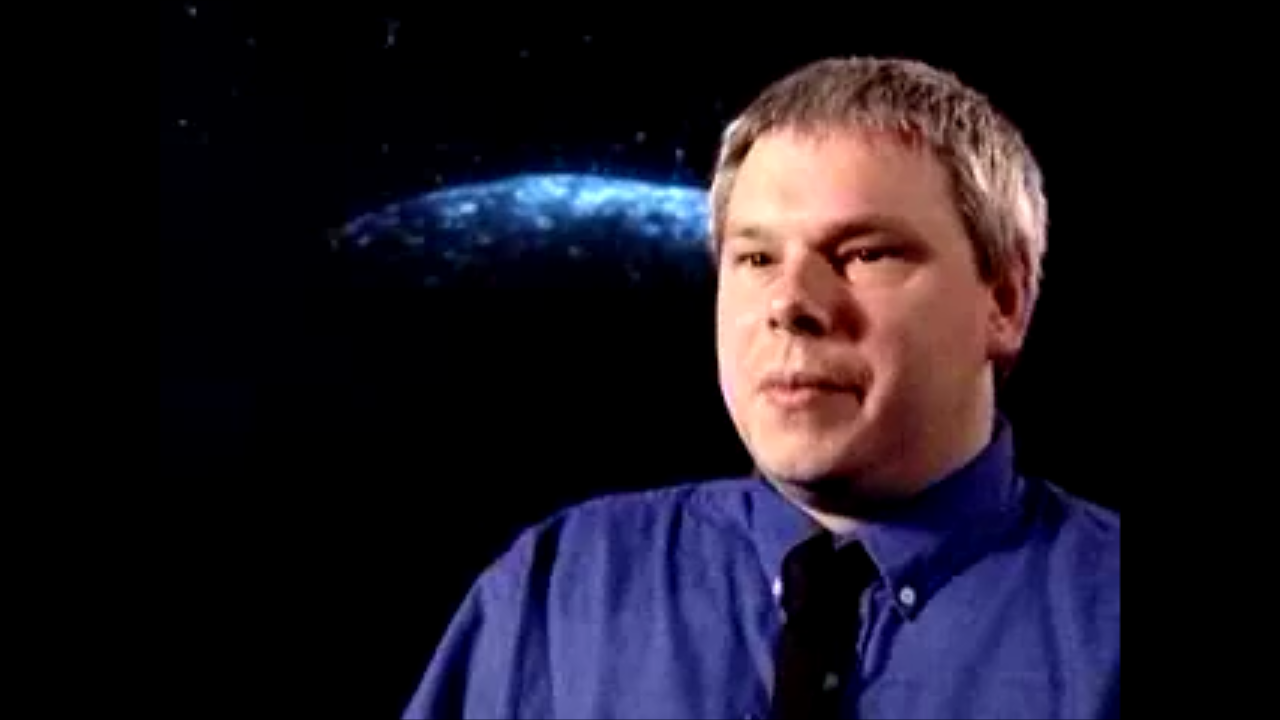NASA's Hubble Space Telescope is hot on the trail of an intriguing new class of solar system object that might be called a Pluto "mini-me" - dim and fleeting objects that travel in pairs in the frigid, mysterious outer realm of the solar system called the Kuiper Belt.
In results published today in the journal Nature, a team of astronomers led by Christian Veillet of the Canada-France-Hawaii Telescope Corporation (CFHT) in Kamuela, Hawaii, is reporting the most detailed observations yet of the Kuiper Belt object (KBO) 1998 WW31, which was discovered four years ago and found to be a binary last year by the CFHT.
Pluto and its moon Charon and countless icy bodies known as KBOs inhabit a vast region of space called the Kuiper Belt. This 'junkyard' of material left over from the solar system's formation extends from the orbit of Neptune out to 100 times as far as the Earth is from the Sun (which is about 93 million miles) and is the source of at least half of the short-period comets that whiz through our solar system. Only recently have astronomers found that a small percentage of KBOs are actually two objects orbiting around each other, called binaries.
"More than one percent of the approximately 500 known KBOs are indeed binary: a puzzling fact for which many explanations will be proposed in what is going to be a very exciting and rapidly evolving field of research in the coming years," says Veillet.
Hubble was able to measure the total mass of the pair based on their mutual 570-day orbit (a technique Isaac Newton used 400 years ago to estimate the mass of our Moon). The 'odd-couple' 1998 WW31 together are about 5,000 (0.0002) times less massive than Pluto and Charon.
Like a pair of waltzing skaters, the binary KBOs pivot around a common center of gravity. The orbit of 1998 WW31 is the most eccentric ever measured for any binary solar system object or planetary satellite. Its orbital distance varies by a factor of ten, from 2,500 to 25,000 miles (4,000 to 40,000 kilometers). It is difficult to determine how KBOs wind up traveling in pairs. They may have formed that way, born like twins, or may be produced by collisions where a single body is split in two.
Ever since the first KBO was discovered in 1992, astronomers have wondered how many KBOs may be binaries, but it was generally assumed that the observations would be too difficult for most telescopes. However, the insights to be gained from study of binary KBOs would be significant: measuring binary orbits provide estimates of KBO masses, and mutual eclipses of the binary allow astronomers to determine individual sizes and densities. Assuming some fraction of KBOs should be binary - just as has been discovered in the asteroid belt - astronomers eventually began to search for gravitationally entwined pairs of KBOs.
Then, finally, exactly a year ago on April 16, 2001, Veillet and collaborators announced the first discovery of a binary KBO: 1998 WW31. Since then, astronomers have reported the discoveries of six more binary KBOs. "It's amazing that something that seems so hard to do and takes many years to accomplish can then trigger an avalanche of discoveries," says Veillet. Four of those discoveries were made with the Hubble Space Telescope: two were discovered with a program led by Michael Brown of the California Institute of Technology in Pasadena, CA, and two more with a program led by Keith Noll of the Space Telescope Science Institute in Baltimore, MD. The sensitivity and resolution of Hubble is ideal for studying binary KBOs because the objects are so faint and so close together.
The Kuiper Belt is one of the last big missing puzzle pieces to understanding the origin and evolution of our solar system and planetary systems around other stars. Dust disks seen around other stars could be replenished by collisions among Kuiper Belt-type objects, which seems to be common among stars. These collisions offer fundamental clues to the birth of planetary systems.
BACKGROUND INFORMATION: THE SEARCH FOR THE KUIPER BELT
In 1950, Dutch astronomer Jan Oort hypothesized that comets came from a vast shell of icy bodies about 50,000 times farther from the Sun than is the Earth. This region is called the Oort Cloud.
A year later, astronomer Gerard Kuiper suggested that some comet-like debris from the formation of the solar system should also be just beyond Neptune. In fact, he argued, it would be unusual not to find such a continuum of debris, since this would imply the primordial solar system has a discrete "edge."
This notion was reinforced by the realization that there is a separate population of comets, called the Jupiter family, that behave strikingly different than those coming from the far reaches of the Oort Cloud. Besides orbiting the Sun in less than 20 years (as opposed to 200 million years for an Oort member), the comets are unique because their orbits lie near the plane of the Earth's orbit around the Sun. In addition, all these comets go around the Sun in the same direction as the planets.
Kuiper's hypothesis was reinforced in the early 1980s when computer simulations of the solar system's formation predicted that a disk of debris should naturally form around the edge of the solar system. According to this scenario, planets would have agglomerated quickly in the inner region of the Sun's primordial disk of material and gravitationally swept up residual debris. However, beyond Neptune, the last of the gas giants, there should be a debris field of icy objects that never coalesced to form planets.
The Kuiper Belt remained theory until the 1992 detection of a 150-mile-wide body called 1992QB1 at the distance of the suspected belt. Several similar-sized objects were discovered, quickly confirming the Kuiper Belt was real. The planet Pluto, discovered in 1930, is considered the largest member of this Kuiper Belt region. Neptune's satellites, Triton and Nereid, and Saturn's satellite, Phoebe, are in unusual orbits and may be captured Kuiper Belt objects. Astronomers also have identified seven binary objects that originate from this region.

























